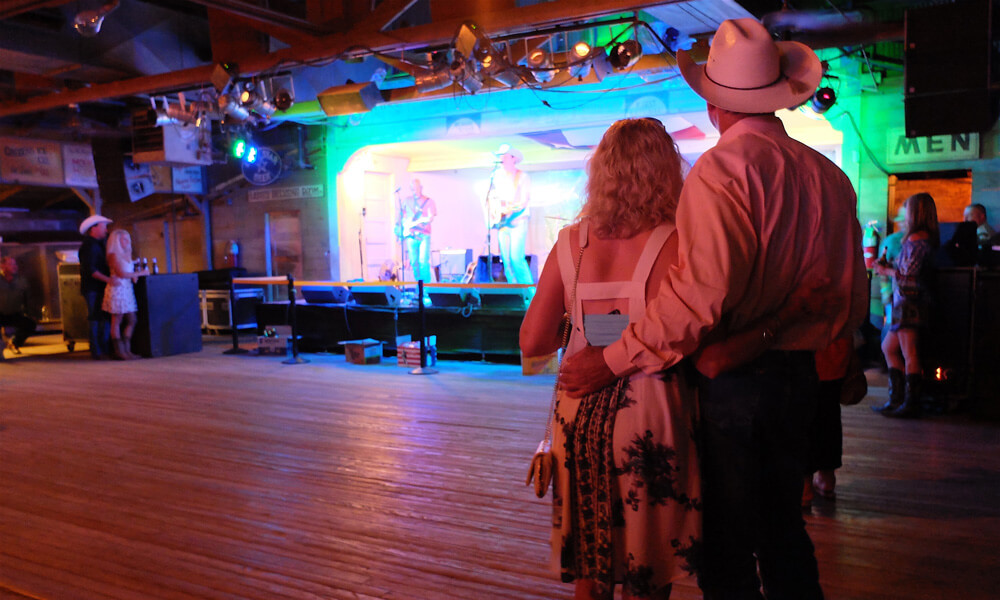Two-step into Gruene for music and history
Need an excuse to pull on your cowboy boots? Two words: Gruene Hall.
Just 10 miles from your front door at Kissing Tree, take a right on Hunter Road and you’re pulling into Gruene in no time at all.
And you’ll want those boots—the more weathered the better—for scooting across the worn wooden floor of Texas’ oldest dance hall. Hundreds of country music legends have headlined here, although the dancing is fun no matter who’s on stage.
Built in 1878, Gruene Hall is appropriately Texas-sized—around 6,000 square feet—and still in its original configuration. A big bar awaits you inside the front door, where autographed photos of celebrities who’ve performed there since 1975 adorn the walls.
Proceed around the bar, and you’re in a dark, vast honky-tonk that may have fancier lighting than it did 100 years ago, but is still primitive and unpretentious.
If you want to pretend you don’t dance, there’s a pool table in the screened porch “flap” and long rows of picnic tables under the trees outside in the biergarten.
There’s something about swigging from an ice-cold bottled beer here that makes us feel downright giddy to be Texan. Every time we visit, we’re thankful Gruene Hall—and the town around it—was revived in the ‘70s by some enterprising young men with an appreciation for history and music.
Developers were about to raze Gruene when Chip Kaufman, an architecture student at The University of Texas, stumbled upon the crumbling burg. He convinced the owners the town was worth saving. With their blessing, Kaufman worked to list Gruene as a district on the National Register of Historic Places and found new owners for the buildings.
Gruene was founded in 1845 by German farmers Ernst and Antoinette Gruene just downriver from New Braunfels, on the banks of the Guadalupe River. The pair planted about 9,000 acres of cotton and was wildly prosperous until around 1920, when their successful second son Henry died, and boll weevils decimated the cotton industry.
The dance hall was barely functioning when Kaufman’s ads in Texas Monthly brought San Antonio entrepreneur and Texas music lover Pat Molak to town.
Molak bought the hall first and with assistance from partner Mary Jane Nalley packed the house with singer-songwriters including Willie Nelson (who demanded a private entry still known as “Willie’s door”), George Strait and Lyle Lovett.
And it didn’t stop there. Molak ended up with 23 of the historic district’s 25 acres, converting a number of great old buildings into the restaurants and shops that—along with the hall—have made Gruene a major tourist destination.
The town thrives on weekends outside the hall, with specialty shops, antique stores and half-dozen restaurants (our top picks for dinner: the Gristmill River Restaurant & Bar, Mozies, Cantina del Rio or Adobe Verde). At the Gruene General Store, fresh-dipped ice cream, cowboy hats and locally made foodstuffs are among the enticements. There’s wine tasting at The Grapevine and caffeine at Gruene Coffee House.
You can’t miss the tin-roofed Gruene Hall, in the shadow of the water tower: The road stops right at the front door.

